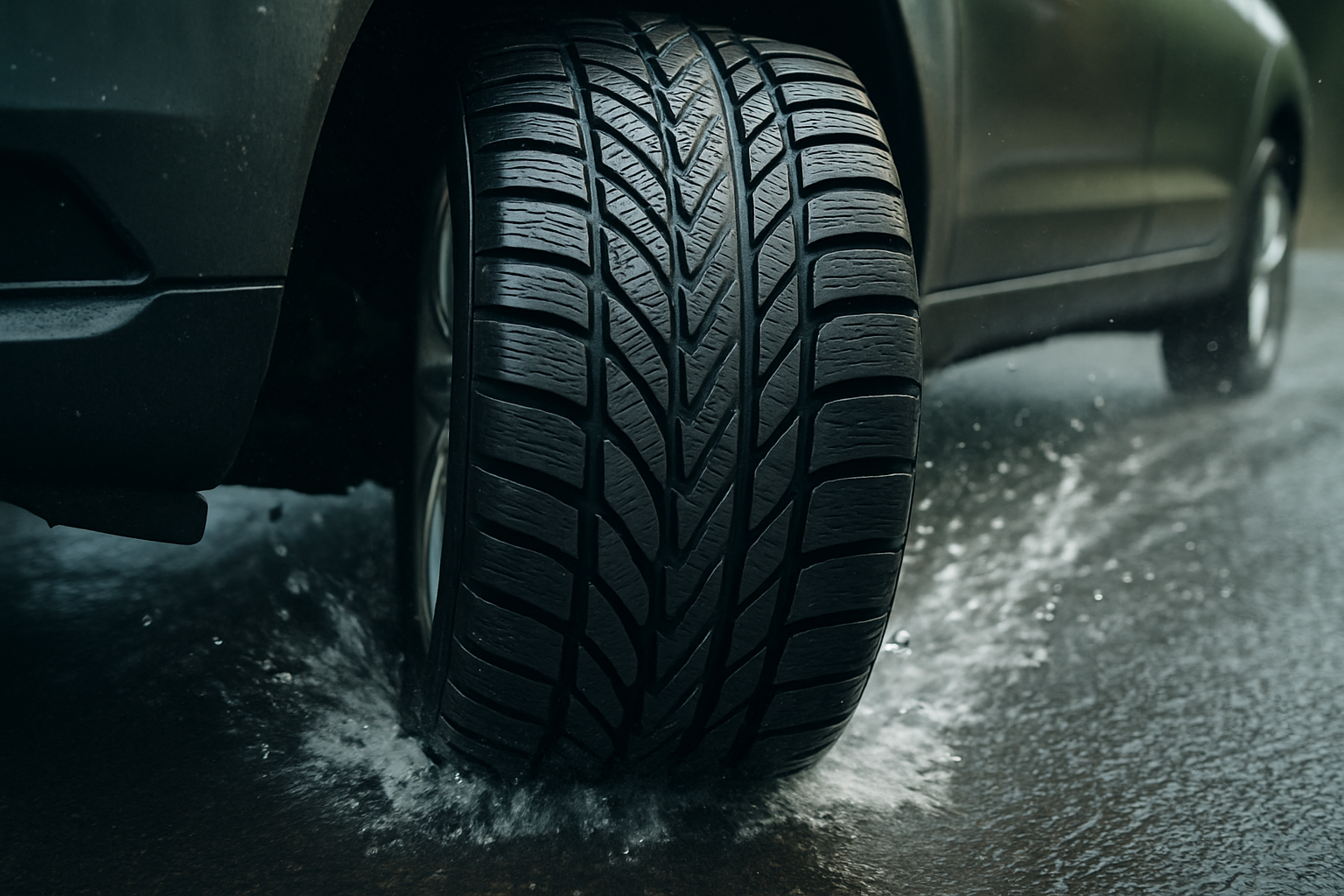Hydroplaning: The Aquatic Nemesis of Road Safety
Imagine cruising down a rain-soaked highway, your wipers working overtime to clear the deluge from your windshield. Suddenly, your steering feels light, your tires lose their grip, and for a heart-stopping moment, you're skimming across the water's surface like a stone. This terrifying scenario is all too real for drivers who've experienced hydroplaning, a phenomenon that turns roads into treacherous waterways and challenges even the most skilled motorists.

The Trifecta of Risk Factors
Three primary factors contribute to hydroplaning: speed, water depth, and tire condition. Higher speeds reduce the time available for water dispersion, increasing the likelihood of hydroplaning. Deeper water overwhelms the tire’s channeling capacity, while worn tires with reduced tread depth are less effective at evacuating water. The combination of these factors creates a perfect storm for losing control on wet roads.
Tread Design: Nature’s Inspiration
Tire manufacturers have long looked to nature for inspiration in combating hydroplaning. The intricate patterns of tire treads often mimic natural water-dispersing designs found in animal paws or plant structures. Advanced computer modeling and extensive real-world testing have led to tread patterns that efficiently channel water away from the tire’s contact patch, maintaining crucial grip even in challenging conditions.
The Role of Tire Pressure
Proper tire inflation plays a crucial role in preventing hydroplaning. Underinflated tires deform more easily, reducing the effectiveness of tread patterns and increasing the likelihood of water becoming trapped beneath the tire. Conversely, overinflated tires can reduce the contact patch, limiting the tire’s ability to cut through water. Regular tire pressure checks are a simple yet effective way to enhance safety in wet conditions.
Technological Countermeasures
Modern vehicles employ a range of technologies to combat hydroplaning. Anti-lock braking systems (ABS) prevent wheel lock-up during emergency braking, allowing drivers to maintain some steering control even on slippery surfaces. Traction control systems monitor wheel spin and can reduce engine power or apply brakes to individual wheels to maintain grip. Some advanced driver assistance systems can even detect hydroplaning conditions and alert the driver or intervene to help stabilize the vehicle.
The Human Factor: Driving Techniques
While technology plays a significant role in mitigating hydroplaning risks, driver behavior remains crucial. Reducing speed in wet conditions, avoiding sudden movements, and maintaining proper following distances are essential techniques. Drivers should also be aware of areas prone to water accumulation, such as dips in the road or areas with poor drainage. In the event of hydroplaning, the recommended approach is to ease off the accelerator and steer gently in the desired direction of travel, avoiding sudden braking or steering inputs.
The Future of Wet-Weather Driving
As climate change brings more extreme weather events, including heavier rainfall, addressing hydroplaning becomes increasingly important. Researchers are exploring new tire materials and tread designs that could further enhance wet-weather performance. Some concepts include dynamic tread patterns that can adapt to road conditions in real-time or hydrophobic coatings that actively repel water from the tire surface.
Infrastructure Solutions
Road design and maintenance also play a critical role in preventing hydroplaning. Proper road grading, efficient drainage systems, and regular maintenance to prevent water accumulation are essential. Some innovative road designs incorporate porous asphalt or concrete that allows water to drain through the road surface itself, significantly reducing the risk of standing water.
A Holistic Approach to Safety
Combating hydroplaning requires a multifaceted approach involving vehicle technology, tire design, driver education, and infrastructure improvements. As automotive journalists, we have a responsibility to educate drivers about the risks of hydroplaning and the techniques to prevent and manage it. By raising awareness and promoting safe driving practices, we can contribute to making roads safer for everyone, even when Mother Nature unleashes her watery wrath.





